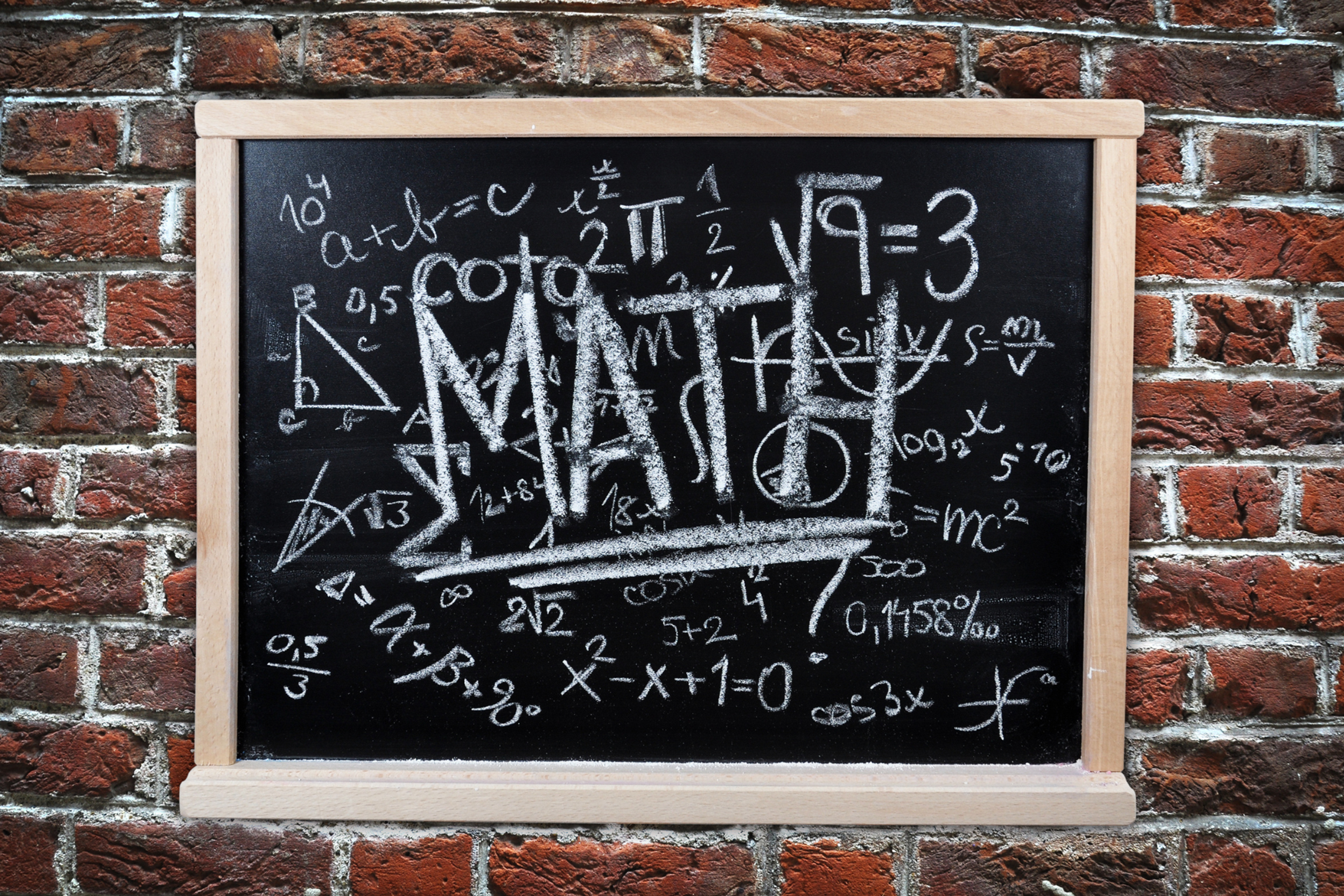50+ Brain Teaser Interview Questions You Could Be Asked
Get ready to tackle any interview with 50+ brain teasers that challenge your thinking, sharpen your problem-solving skills, and help you impress your future employer.
Posted March 6, 2025

Table of Contents
Have you ever been in the middle of an interview, expertly answering every question asked, only for the interviewer to throw you a huge curveball question? Brain teaser interview questions are designed to do just that! Brain teasers challenge a candidate’s analytical thinking, logical thinking, and problem-solving skills. So, they're not just about finding the right answer; they're about showcasing your ability to think on your feet and approach complex problems creatively.
In this article, you will encounter over 50 mind-bending questions, but don’t worry! If you ever feel like giving up, just scroll a bit down and you’ll find the answers to every question that we have provided. You'll discover different types of popular brainteaser interview questions, from guesstimate questions to logical riddles, and get a chance to practice with over 50 brain teaser examples.
Plus, we'll throw in a bonus for you by providing you tips on how to tackle these tricky questions and avoid common pitfalls. Whether you're preparing for a consulting interview or just love a good mental challenge, this guide will sharpen your problem-solving skills and boost your confidence. Are you ready? Let the brain teasing begin!
What are Brain Teasers in Consulting Interviews?
Brain teasers are short riddles or word problems designed to test your critical thinking skills when faced with abstract challenges. These puzzles are defined as problems whose solution requires great ingenuity. In consulting interviews, they serve a unique purpose: to assess your ability to think logically and make connections that aren't immediately obvious.
While not as common as they once were, brain teasers remain a part of some consulting firms' recruiting processes. They offer insights into how you approach novel problems outside of a business context, which is particularly valuable when evaluating candidates with limited work experience.
Brain teasers in consulting often include a mathematical component to gauge your numeracy skills alongside critical thinking. They're not just about finding the right answer; they're about showcasing your problem-solving approach, creativity, and ability to remain calm under pressure.
Remember, your method of tackling these puzzles is as important as the solution itself. Firms are looking for candidates who can think flexibly and logically, demonstrating the qualities essential for success in consulting.
7 Types of Brain Teasers You Might Encounter in Consulting Interviews
In consulting interviews, you might face seven common types of brain teasers designed to test your critical thinking and problem-solving skills. These puzzles range from logical reasoning to creative thinking, each offering unique challenges. To excel, you need to listen carefully to the problem statements and demonstrate your communication skills effectively. Many of these questions require candidates to think on their feet and articulate their thought process clearly.
- Logical Brain Teaser: These questions rely on pure math skills and logical reasoning, without tricks or illusions.
- Guesstimation Brain Teaser: Also known as market-sizing questions, these require you to make informed predictions using available data.
- Mathematical Brain Teaser: These puzzles challenge you to apply mathematical concepts creatively, testing your ability to solve problems quickly.
- Riddle Brain Teaser: These are puzzles that present clever or tricky questions requiring thoughtful or unexpected solutions.
- Illusion Brain Teaser: These questions generate false impressions, testing your ability to focus on crucial information.
- Wordplay Brain Teaser: These questions play with word meanings, often misleading you from the default interpretation.
- Pattern Brain Teaser: You'll need to identify trends in number or letter series, either filling gaps or predicting the next item.
50+ Common Brain Teaser Interview Questions
Brain teasers are puzzles designed to challenge your ability to think logically and make connections that aren't immediately obvious. In consulting interviews, these questions come in various types, each testing different aspects of your problem-solving skills. Here are 50+ common examples of brain teaser questions and answers in consulting interviews:
Guesstimation Brain Teaser Examples with Answers
Guesstimation brain teasers, also known as market-sizing questions, are a common type of puzzle you might encounter in consulting interviews. These questions assess your ability to make informed estimations without concrete data. Your approach is more important than the exact answer. Let's explore these examples:
Questions
Question 1:
An apple costs 40 cents, a banana costs 60 cents and a grapefruit costs 80 cents. How much does a pear cost?
Question 2:
How many piano tuners are there in the entire world?
Question 3:
How many square feet of pizza are eaten in the United States each month?
Question 4:
How many golf balls fit in a Boeing 737?
Question 5:
How many gas stations are in the U.S.?
Question 6:
How much revenue does the average laundromat make per year?
Answers
Answer 1:
40 cents. When the price of each fruit is calculated by multiplying the number of vowels by 20 cents.
Answer 2:
OK, so this one involves a lot of estimating and requires some assumptions and calculations. Here's a rough approach to figure it out:
- Estimate the number of pianos: Let's assume there are about 1 billion people in countries where pianos are common. Suppose 1 in 100 people has access to a piano, meaning there are about 10 million pianos.
- Frequency of tuning: On average, a piano might be tuned once a year.
- Number of tunings a tuner can do: If a piano tuner can tune about 3 pianos per day and works 250 days a year, they can tune about 750 pianos annually.
- Estimate the number of tuners: To tune all the pianos, we divide the number of pianos by the number of pianos one tuner can tune annually: 10 million pianos / 750 pianos per tuner ≈ 13,333 tuners.
So, there might be approximately 13,000 to 15,000 piano tuners in the world.
Answer 3:
Start with the rough figure of 340 million people in America. Let's say 240 million of the population eat pizza. Now let's say the average pizza-eating person eats pizza 2x a month and eats two slices at a time. That's four slices/month.
If the average slice of pizza is perhaps six inches at the base and 10 inches long, then the slice is 30 square inches of pizza. So four pizza slices would be 120 square inches. Since 1 square foot = 144 square inches, each person who eats pizza probably eats 1 square foot per month.
Since there are 240 million pizza-eating Americans, 240 million square feet of pizza are consumed in the US each month.
Answer 4:
Estimate: 23,800 to 31,640 golf balls
Key assumptions:
- Cabin volume: 3,000 to 4,000 cubic feet
- Golf ball volume: 2.5 cubic inches
- Packing efficiency: 70%
Answer 5:
Estimate: 132,400 gas stations
Key assumptions:
- U.S. population: 331 million
- One gas station per 2,500 residents
Answer 6:
Estimate: $146,000 per year
Key assumptions:
- 20 washing machines
- $20 revenue per machine per day
- Open 365 days a year
Remember, these questions test your problem-solving approach and ability to make reasonable assumptions.
Logical Brain Teaser Examples with Answers
Logical brain teasers are designed to test your deductive reasoning and creative problem-solving skills. These puzzles often present scenarios where the answer isn't immediately apparent, challenging you to think outside the box. By solving logic puzzles, you can gauge a candidate's knowledge and ability to navigate complex scenarios. The process of arriving at the correct answer often involves analyzing clues and applying critical thinking skills.
Questions
Question 1:
What day follows the day before yesterday if two days from now will be Sunday?
Question 2:
An explorer found a silver coin marked 7 B.C.. He was told it was a forgery. Why?
Question 3:
If five cats can catch five mice in five minutes, how long will it take one cat to catch one mouse?
Question 4:
Jack is looking at Anne. Anne is looking at George. Jack is married, George is not, and we don’t know if Anne is married. Is a married person looking at an unmarried person?
Question 5:
A bus can hold x people. It was half full from the start, and at the first stop, y people got off. How many people can now get on the bus?
Question 6:
A boy and a girl are sitting on a bench. “I’m a girl,” says the child with brown hair. “I’m a boy,” says the child with blond hair. If at least one of them is lying, which one is lying?
Question 7:
Five people were eating apples, A finished before B, but behind C. D finished before E, but behind B. What was the finishing order?
Question 8:
Susan and Lisa decided to play tennis against each other. They bet $1 on each game they played. Susan won three bets and Lisa won $5. How many games did they play?
Question 9:
You're in a room with three switches connected to three bulbs in another room. You can't see the bulbs from where you are. You can enter the bulb room only once. How do you determine which switch controls which bulb?
Question 10:
Why are manhole covers round?
Question 11:
A group stands in line, each wearing a black or white hat. They can only see hats in front of them. Starting from the back, each must guess their hat color. If correct, they're saved; if wrong, executed. What strategy maximizes survival?
Question 12:
You face two doors and two guards. One door leads to freedom, the other to death. One guard always tells the truth, the other always lies. You can ask only one question to one guard. What do you ask?
Question 13:
A windowless room has 3 light bulbs. You’re outside the room with 3 switches, each controlling one of the light bulbs. If you can only enter the room one time, how can you determine which switch controls which light bulb?
Answers
Answer 1:
It's Thursday! Since “two days from now will be Sunday”, today must be Friday. The “day that follows the day before yesterday" is just yesterday, so that makes it Thursday.
Answer 2:
Well, the concept of B.C. (Before Christ) wasn't established until long after the supposed time of 7 B.C.. That’s why the coin was a forgery.
Answer 3:
It’s five minutes. If five cats can catch five mice in five minutes, it means that each cat catches one mouse in the same five minutes. Therefore, it will take one cat the same amount of time – five minutes – to catch one mouse.
Answer 4:
Yes. If Anne is married, then she (a married person) is looking at George (an unmarried person).
Answer 5:
At the beginning, half of the seats on the bus are empty. After the first stop, more people get off, leaving some additional seats empty. So now, the number of empty seats is the original half – plus however many more seats became empty at the stop.
Answer 6:
Both of them are lying. Because if either of them told the truth, they would say the same answer.
Answer 7:
The finishing order is C, A, B, D, E.
Answer 8:
That’s a total of 11 games. Since Susan won three games, she earned $3 from Lisa. For Lisa to end up winning $5 overall, she had to win enough games to recover the $3 she lost and gain an additional $5. This means Lisa won 8 games (earning $8), resulting in a total of 11 games played.
Answer 9:
Turn on one switch for a few minutes, then turn it off. Turn on another switch, then enter the room. The on bulb corresponds to the second switch, the off but hot bulb to the first, and the off and cold bulb to the third.
Answer 10:
Manhole covers are round because a round shape cannot fall through its own opening, making it safer and easier to place back correctly. Additionally, the round shape is easier to manufacture and move.
Answer 11:
The person at the back counts white hats. If even, guess white; if odd, guess black. Each person follows this logic based on remaining hats.
Answer 12:
"If I were to ask the other guard which door leads to freedom, what would he say?" Then, choose the opposite door.
Answer 13:
Turn on the first switch for a few minutes, then turn it off and turn on the second switch; when you enter the room, the lit bulb matches the second switch, the warm bulb matches the first, and the cool bulb matches the third.
Math Brain Teaser Examples with Answers
Mathematical brain teasers challenge your quantitative and reasoning abilities, crucial for roles like quant analyst or trader. These puzzles often focus on probability and don't always involve obvious numerical elements. They can also test your ability to solve complex problems and determine solutions in unconventional ways. For instance, figuring out the average speed of a vehicle based on partial journey details requires both analytical skills and a creative approach.
Questions
Question 1:
What is half of two plus two?
Question 2:
How do you go from 98 to 720 using just one letter?
Question 3:
A king receives 1000 gold bars from each of his 1000 subjects. One subject's bars weigh 0.9 lbs instead of 1 lb. Using a digital scale once, how does the king identify the culprit?
Question 4:
How many 9's are there between 1 and 100?
Question 5:
A bike shop has identical bikes with between 200-300 spokes total. Each bike's wheels have at least one spoke each. How many bikes and spokes are there?
Question 6:
When my father was 31 I was 8. Now he is twice as old as me. How old am I?
Question 7:
There are 500 coffins and 500 men who need them. The undertaker asks the first man to go to every coffin and open them. Then he tells the second man to go to everyone and close it. The third one goes to every third coffin and so on. How many are open?
Question 8:
You have a cylinder with a 24 cm circumference and 90 cm height. How long is a string that wraps around it five times, moving up the cylinder?
Question 9:
“In two years I know, I'll be twice as old as five years ago,” said Tom. How old is Tom?
Answers
Answer 1:
It’s three! Because (half of 2) + 2 = 3.
Answer 2:
Just add an "x" between the figures 90 and 8. 90 x 8 = 720
Answer 3:
Place 1 bar from the first subject, 2 from the second, and so on. The total weight difference reveals the cheater.
Answer 4:
20
Answer 5:
17 bicycles with 17 spokes each. The total (289) is the only prime square between 200-300.
Answer 6:
23 – that is if my father is twice as old as me.
Answer 7:
22
Answer 8:
Unravel the cylinder into a rectangle (24 cm x 90 cm). Divide 90 cm into 5 sections of 18 cm each. Use the Pythagorean theorem to calculate the diagonal length and multiply by 5.
Answer 9:
12
Illusion Brain Teaser Examples with Answers
During an interview process, candidates are often tested not just on their knowledge but on their ability to think critically and avoid common question tricks. Brain teasers like these are designed to challenge assumptions and assess problem-solving skills. Here's a set of such questions that can easily catch you off guard if you're not careful.
Questions
Question 1:
A farmer has 17 sheep and all but 9 die. How many are left?
Question 2:
How many two-cent stamps are there in a dozen?
Question 3:
If a doctor gives you three pills, telling you to take one every half hour, how many minutes will pass from taking the first pill to the last pill?
Question 4:
Is it possible for a man in California to marry his widow's sister?
Question 5:
Two U.S. coins add up to 30 cents. If one of them is not a nickel, what are the two coins?
Answers
Answer 1:
9 sheeps. The question tries to trick you into calculating “17-9 = 8” when the answer is already mentioned.
Answer 2:
12 stamps. Did you try to multiply 12 with 2? That’s not it.
Answer 3:
60 minutes. There are only two 30-minute intervals.
Answer 4:
No. The keywords there are “his widow”, which signifies that the man has already died.
Answer 5:
A nickel (5 cents), and a quarter (25 cents). This question tricks you into thinking neither coin is a nickel.
Wordplay Brain Teaser Examples with Answers
Wordplay brain teasers are a fun way to test your language skills and lateral thinking. These puzzles often involve clever twists with words, challenging you to think creatively to find the solution. They are popular brainteaser interview questions, particularly when employers want to see how you handle a letter trick question.
Questions
Question 1:
What five-letter word becomes shorter when you add two letters to it?
Question 2:
What is unusual about the following words: revive, banana, grammar, voodoo, assess, potato, dresser, uneven?
Question 3:
Transform the word "CAT" into the word "DOG" by changing one letter at a time, with each step resulting in a valid English word.
Question 4:
What letter comes next in the following sequence? D R M F S L T_
Question 5:
What word is spelled incorrectly in every dictionary?
Question 6:
What word becomes shorter when you add two letters?
Answers
Answer 1:
Short.
Answer 2:
If you move the first letter of each word and place it at the end. It will spell the same word backward.
Answer 3:
Cat > Cot > Dot > Dog.
Answer 4:
It’s letter D. Each letter represents one note in the diatonic musical scale: Do, Re, Mi, Fa, Sol, La, Ti, Do.
Answer 5:
Incorrectly.
Answer 6:
Shorter.
Riddle Brain Teaser Examples with Answers
Riddle brain teasers challenge your creative thinking and lateral problem-solving skills. They often involve wordplay or clever twists, requiring you to think outside the box for the answer.
Questions
Question 1:
What has keys but can’t open locks?
Question 2:
I speak without a mouth and hear without ears. I have nobody, but I come alive with the wind. What am I?
Question 3:
You are in a room with 3 monkeys. One monkey has a banana, one has a stick, and one has nothing. Who is the smartest primate?
Question 4:
I am four times as old as my daughter. In 20 years time I shall be twice as old as her. How old are we now?
Question 5:
The more you take, the more you leave behind. What are they?
Question 6:
A man says: "Brothers and sisters, have I none, but that man's father is my father's son." Who is he pointing at?
Question 7:
If an electric train is traveling south, which way is the smoke going?
Question 8:
The day before two days after the day before tomorrow is Saturday. What day is it today?
Question 9:
What has hands but can’t clap?
Question 10:
A monkey, a squirrel, and a bird are racing to the top of a coconut tree. Who will get the banana first, the monkey, the squirrel, or the bird?
Question 11:
What do pandas have that no other animal has?
Question 12:
In 1990, a person is 15 years old. In 1995, that same person is 10 years old. How can this be?
Answers
Answer 1:
A piano.
Answer 2:
An echo.
Answer 3:
You.
Answer 4:
I am 40 and my daughter is 10.
Answer 5:
Footsteps.
Answer 6:
Son.
Answer 7:
There is no smoke, it’s an electric train.
Answer 8:
Friday.
Answer 9:
A clock.
Answer 10:
None of them, because you can't get a banana from a coconut tree.
Answer 11:
Baby pandas.
Answer 12:
The person was born in 2005 B.C. (Before Christ). Therefore, he was 5 years old in 2000 B.C, 10 in 1995 B.C, and 15 in 1990 B.C.
Pattern Brain Teaser Examples with Answers
Pattern brain teasers challenge your ability to recognize and predict sequences or trends. They often involve identifying patterns in numbers, shapes, or symbols and applying logical rules to solve a problem. For example, consider a sequence where each number is double the previous one. Identifying this pattern allows you to predict the next number in the series.
Questions
Question 1:
What comes next in the sequence: 2, 4, 8, 16,__
Question 2:
Find the missing number: 3, 6, 9, 12,__, 18
Question 3:
What comes next in the sequence: 1, 1, 2, 3, 5, 8,__
Question 4:
What is the next shape in the pattern: circle, triangle, square, pentagon,__
Question 5:
What number fits this pattern: 1, 4, 9, 16,__, 36
Question 6:
Find the missing letter in the pattern: A, C, F, J, O,__
Answers
Answer 1:
32 (The pattern is doubling each number.)
Answer 2:
15 (The pattern is adding 3 each time.)
Answer 3:
13 (This is the Fibonacci sequence where each number is the sum of the two preceding ones.)
Answer 4:
Hexagon (The pattern is increasing the number of sides by one.)
Answer 5:
25 (The pattern is the sequence of squares: 1^2, 2^2, 3^2, 4^2, 5^2, 6^2.)
Answer 6:
U (The pattern involves adding consecutive prime numbers to the position of each letter in the alphabet: A(1)+2=C, C(3)+3=F, F(6)+4=J, J(10)+5=O, O(15)+6=U.)
5 Tips for Solving Brain Teasers in Consulting Interviews
To excel at brain teasers in consulting interviews, consider these five essential tips:
- Read carefully: Understand the problem fully before attempting to solve it.
- Break it down: Divide complex problems into smaller, manageable parts.
- Use logic and creativity: Apply reasoning and think outside the box to find innovative solutions.
- Visualize the problem: Draw diagrams to gain new perspectives and insights.
- Think aloud: Verbalize your thought process to demonstrate your problem-solving skills to the interviewer.
Remember, practice is key. Regularly engage in puzzles and mental exercises to sharpen your skills. Stay calm and enjoy the process – a solid problem-solving ability can make a significant impact.
Do Consulting Firms Still Ask Brain Teaser Questions?
While brain teasers are less common in consulting interviews today, they're not entirely extinct. Top-tier firms like McKinsey have phased them out, but tier-2, Big 4, boutique, and in-house consulting firms still use them occasionally. These puzzles assess your analytical thinking, problem-solving abilities, creativity, and mental agility under pressure.
The frequency varies by company and interviewer. You're more likely to encounter brain teasers at firms like Roland Berger, Oliver Wyman, and ADL. However, they're rarely used at MBB firms (McKinsey, BCG, Bain). When included, brain teasers often appear before or after the main case interview.
Remember, interviewers are more interested in your problem-solving approach than the final answer. Focus on showcasing logic, thoughtfulness, and structure when tackling these challenges.
Common Mistakes to Avoid When Solving Brain Teasers
When tackling brain teasers in consulting interviews, avoid common pitfalls that can hinder your performance. Don't rush to conclusions without thoroughly analyzing the problem or stick to one approach without considering alternatives. Instead, take a moment to fully understand the question before attempting to solve it. Break down complex problems into smaller, manageable parts and clearly articulate your thought process to the interviewer. Remember, brain teasers aren't about getting the right answer, but rather demonstrating your approach to difficult situations. Stay flexible, practice active listening, and don't be afraid to think aloud – it helps the interviewer see your creativity and critical thinking skills.
Conclusion
Brain teasers in consulting interviews offer a unique window into a candidate's problem-solving skills and creative thinking. These mind-bending puzzles, ranging from logical riddles to mathematical conundrums, challenge applicants to think on their feet and approach complex problems with ingenuity. While their use has decreased in some top-tier firms, many consulting companies still value brain teasers to gauge a candidate's analytical abilities and mental agility under pressure.
To excel in these challenges, it's crucial to read carefully, break down complex problems, and think aloud to show your reasoning process. Avoiding common pitfalls, such as rushing to conclusions or sticking to one approach, can make a big difference. In the end, these brain teasers are less about finding the right answer and more about showcasing your problem-solving approach, which is a key skill in the dynamic world of consulting.
FAQs for Brain Teaser Interview Questions
What exactly are brain teaser interview questions?
- Brain teaser interview questions are challenging puzzles or logic problems used in job interviews to evaluate a candidate's problem-solving abilities, creativity, critical thinking, and capacity to think innovatively. These questions typically do not have straightforward answers and are designed to be thought-provoking.
Why do interviewers ask brain teasers?
- Interviewers ask brain teasers to evaluate a candidate's problem-solving skills, logical reasoning, and ability to think under pressure.
Are brain teasers good for interviews?
- Yes, brain teasers are good for interviews because they assess candidates' problem-solving skills, creativity, and critical thinking abilities.
How can you effectively prepare for brain teaser questions in interviews?
- Preparing for brain teaser questions involves several strategic steps: Firstly, understand what the interviewer is seeking through the question. Clarify any aspects of the question to ensure full comprehension. It's advisable to ask for a moment to think before responding. Outline your approach to solving the problem aloud to give the interviewer insight into your thought process. Clearly state any assumptions you're making. Break the problem into manageable parts. Use approximations to simplify calculations when necessary, and always perform calculations on paper to avoid errors.
Read more:


















